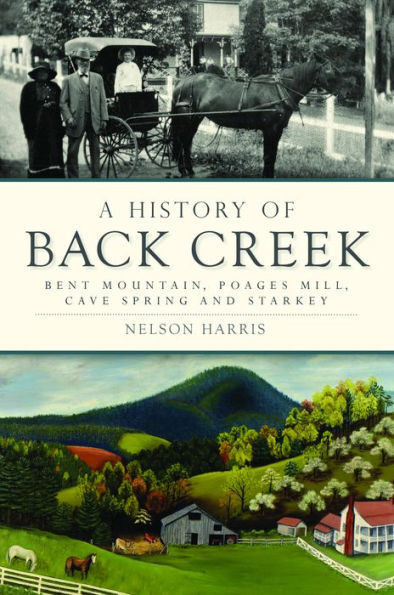
The 12th book from long time church pastor and former Roanoke City Mayor Nelson Harris is “A History of Back
Creek,” which includes glimpses at life in Bent Mountain, Poages Mill, Cave Spring and Starkey. It’s from Arcadia Publishing, where Harris has carved out a niche releasing books focused mostly on local neighborhoods in the valley, accompanied by many pictures he has uncovered in archives.
A History of Back Creek is a bit different in that the 100 photographs in this book – which has more text than in many of Harris’s previous works – were borrowed from local residents in southwest Roanoke County, then scanned before they made it into the book. Harris said he spent three years collecting those photos.
The former Mayor has an affinity for that part of the valley – it’s where his mother’s side of the family came from. About a dozen people helped him collect photos and other tidbits for the book, which is available online and at some local outlets. Harris wound up scanning close to 400 pictures before choosing the 100 that made it into the book.
“My ancestral roots are all in Southwest County,” notes Harris, “at the foot of Bent Mountain.” In fact he also began his career in the ministry at a little church on Bent Mountain. “It’s also my continuation of interest in local history.” Part of the book’s focus is on how southwest Roanoke County was at one time nationally recognized for its apple orchards.
The orchards in Bent Mountain and Back Creek were “economically prosperous a century ago,” says Harris. Papers around the country wrote about apples grown here; they were shipped out of the Starkey area by rail to New York and even to Europe. “I had no idea the kind of vast wholesale network there was in Southwest County.” Pippins and Winesaps were among the apples in demand that were grown locally.
Another thing Harris uncovered while researching A History of Back Creek: two railroads that were proposed to go from Roanoke County up the mountain to Floyd. Neither was built; one would have featured steam locomotives, the other an electric railroad back in the 1910-1920 era. Another line that went through Starkey and Boones Mill supplanted those concepts.
“It ended [up] being absolutely fascinating,” says Harris. “People were digging around in shoeboxes and scrapbooks [for pictures]. Some were over a hundred years old. [Most] of these images have never been published before and have not been publicly accessible. It really is a treasure trove visually.”
Gene Marrano

